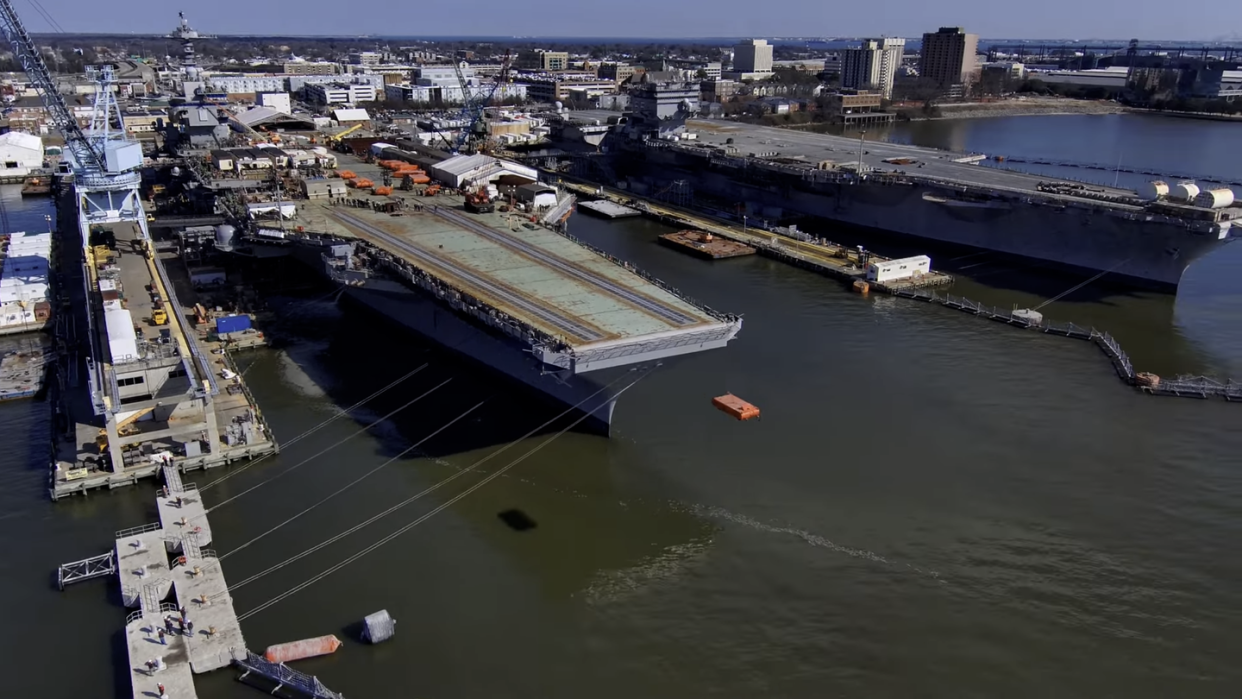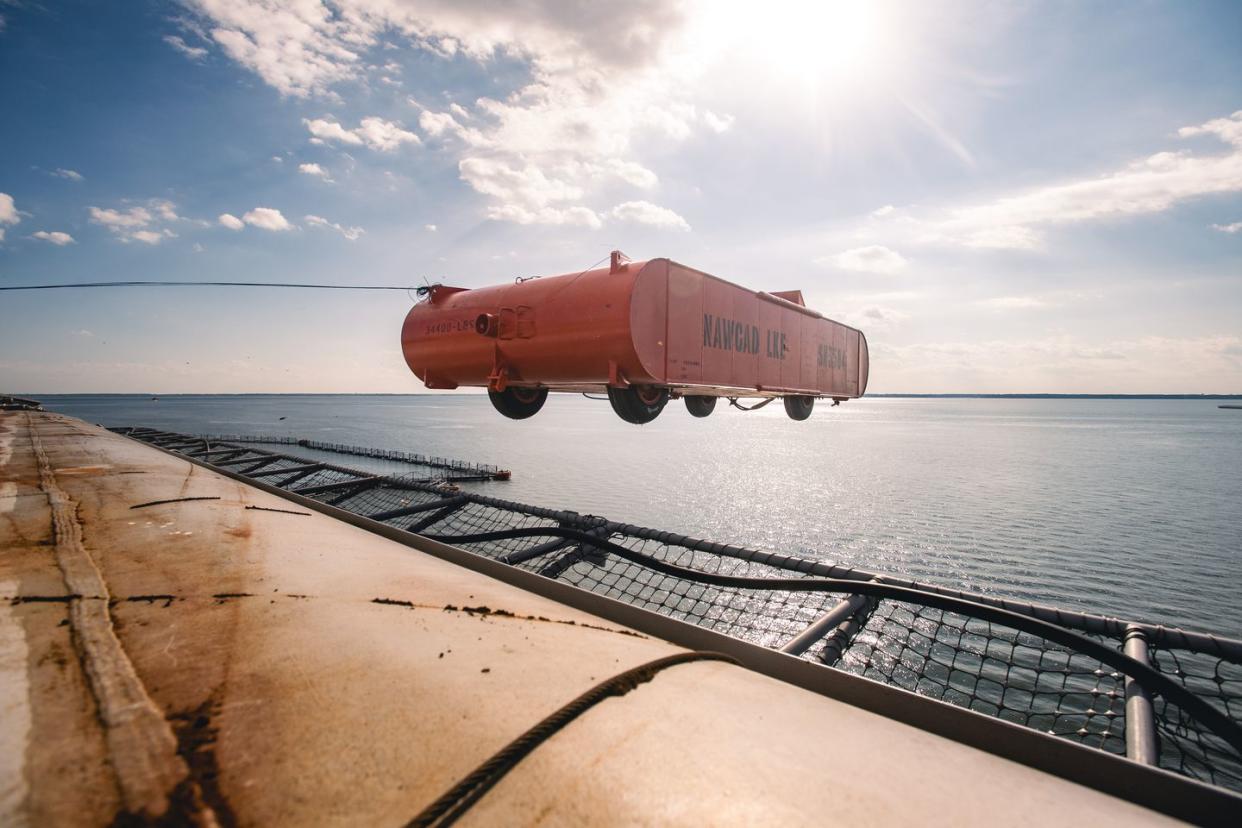The U.S. is Throwing Things Off Aircraft Carriers With an Electromagnetic Catapult

The future John F. Kennedy, currently under construction in Virginia, is testing its electromagnetic catapult.
The tests involve shooting heavy loads, weighing as much as fully loaded aircraft, down the deck and into the Atlantic Ocean.
Kennedy is the second of at least four Ford-class aircraft carriers and will be delivered to the Navy in 2025.
An aircraft carrier under construction on the Virginia coast is beginning to show signs of life—by flinging huge loads off her deck into the nearby James River. The future John F. Kennedy is testing its electromagnetic catapult systems—which are designed to send aircraft aloft—by shooting bright orange, car-like structures off its bow at speeds of up to 150 miles an hour.
“Dead Load” Testing
The tests involve using the Electromagnetic Aircraft Launch System (EMALS), which relies on strong magnetic fields and electricity to launch aircraft, and which replaced traditional steam catapults starting with the USS Gerald R. Ford. Kennedy’s EMALS were originally subject to no-load testing, in which the shuttle that pulls aircraft along the flight deck is tested alone. After that was complete, HII moved on to load testing. The loads—which resemble cars painted safety orange—are being gradually increased in weight up to a total of 80,000 pounds. The testing process is necessary to work out any kinks before attempting to launch manned aircraft.
The tests, shown above, are conducted with load structures that are signed by both the shipbuilders working on Kennedy and their families. The test hurtles the structures down the EMALS path—a distance of more than 300 feet—to a top speed of 150 miles an hour. That’s the speed that will get even the heaviest of carrier-rated aircraft airborne, and which allows a plane’s propellers or turbine engines to get enough forward momentum to take over.
The EMALS launch system is more compact than steam catapults (taking up less internal volume in the ship) and provides a smoother, less jarring ride for pilots. EMALS can also more easily adjust power levels to launch smaller, lighter aircraft such as drones. The Navy projected that EMALS would be able to generate 33 percent more sorties a day, though it’s not clear if it has actually hit that milestone yet.
Not a Smooth Takeoff

EMALS had a rocky development on the Ford, with frequent breakdowns contributing to the carrier’s late entry into the fleet. EMALS had significant problems as late as 2020, when a fault in the electrical system rendered the carrier unable to launch planes for five days. The system seems to have, at long last, reached the mature phase—in mid-2023, the Navy awarded defense contractor General Atomics a contract to provide EMALS for the future USS Doris Miller and France’s next generation aircraft carrier, known as PANG.
The Navy is currently looking to build at least four Ford-class carriers: Gerald R. Ford, John F. Kennedy, Enterprise, and Doris Miller. That number will likely expand to 10 as the service replaces older Nimitz-class carriers on a 1:1 basis. Alternatively, the service could build more or fewer carriers, or even replace some with lighter, less expensive (and less capable) carriers.
The future carrier is currently designated Pre-Commissioning Unit John F. Kennedy, or PCU John F. Kennedy. The ship will hold that title throughout the fitting out and sea trials period, as the shipbuilder and the Navy confirm it is fit to join the battle force. Only when it is commissioned into the fleet—scheduled to take place sometime in 2025—will the carrier become USS John F. Kennedy.
You Might Also Like
